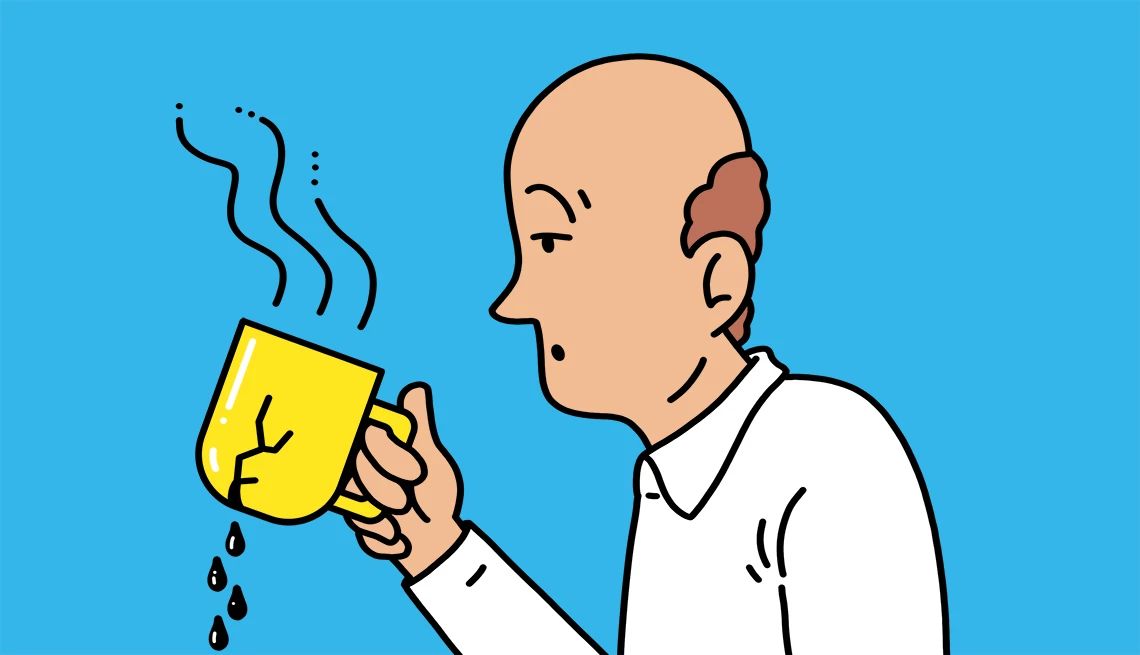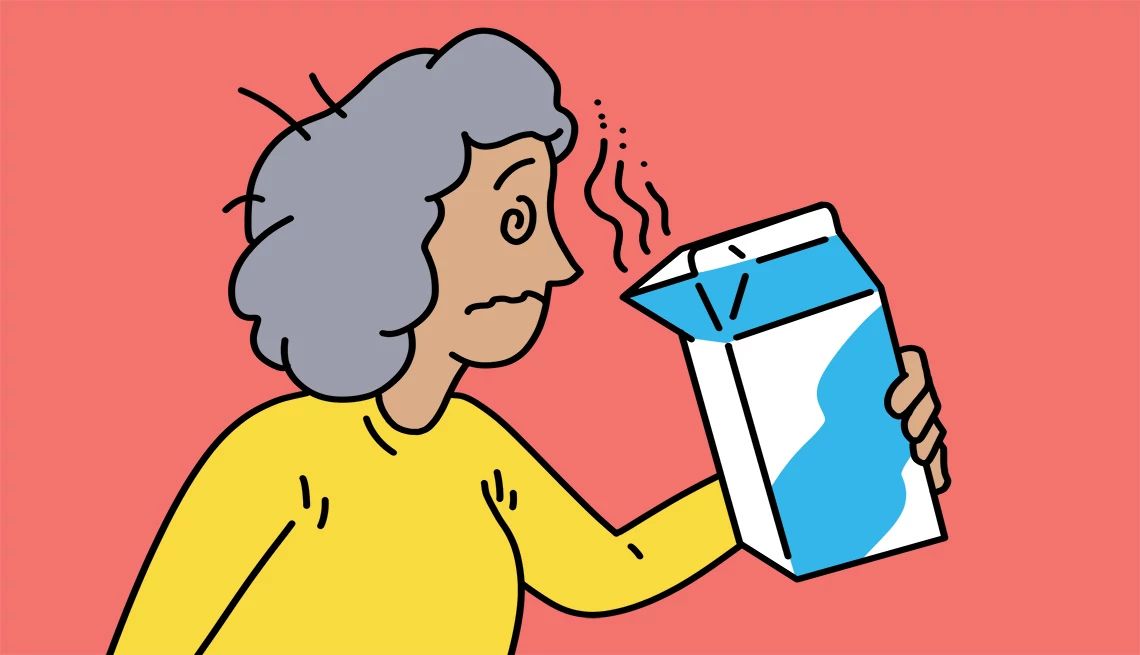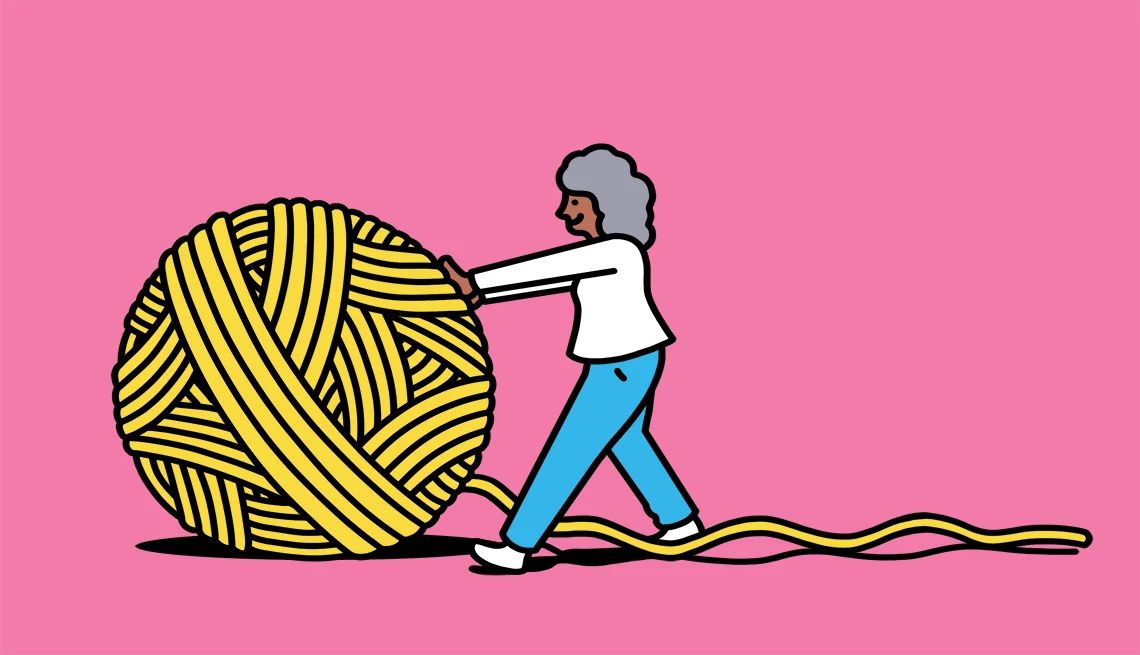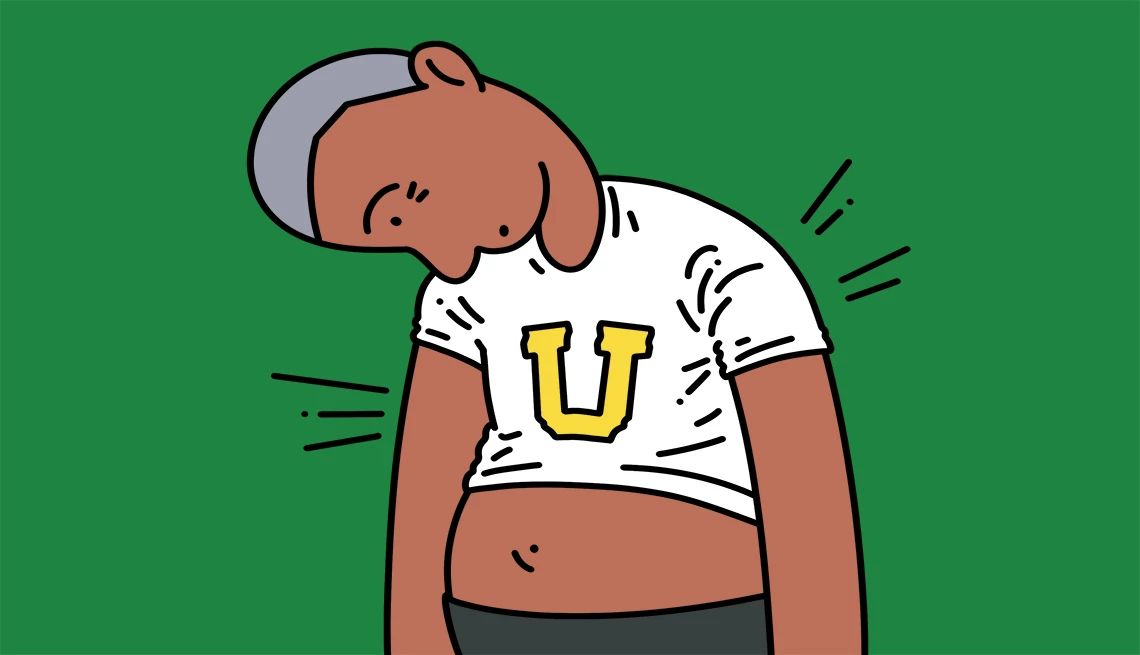AARP Hearing Center


Kim Livengood, a 55-year-old public relations professional in Sarasota, Florida, once considered herself a pack rat. She struggled to part with everything from her childhood magazine collection she’d been accumulating since age 14 to clothing she never wore. But when she and her husband sold their home and moved into a 900-square-foot condo, downsizing became a necessity.
“Once I started giving things away and recycling, I started to feel lighter,” she says, adding if she was able to do it, “anyone can!”
From paperclips to extra jackets, tchotchkes and beyond, many of us have homes bursting at the seams. Research tells us that clutter is not great for our mental health. And wouldn’t it be nice to have people over occasionally without having to start the evening with “sorry our home is such a mess”?
In recent years, minimalism – getting rid of excessive belongings to make more room for what’s important – has been on the rise, especially since the pandemic. “People were at home more and were ‘face to face with all that stuff,’ ” says Ryan Nicodemus, one half of the Minimalists, who, alongside Joshua Fields Millburn, helps people simplify their lives.
Ready to declutter but don’t know where to start? Here are 25 things to start tossing immediately.
1. Anything that doesn’t add value
Fields Millburn says to ask yourself: “How might my life be better with less?” This can help you understand why you want to downsize, which is highly individual. For instance, some people want to quit their buying habit for more financial freedom, while others want fewer items to care for and more time to spend with family and friends.
“Understanding the why behind simplifying gives us the leverage we need to begin to let go and helps us understand what is excess,” Fields Millburn explains.
2. Just-in-case items
To the Minimalists, “just in case” are three dangerous words. “If you look around your house, you’ll likely find thousands of items you’re storing just in case you might need them in some nonexistent hypothetical future,” Fields Millburn says. These items can usually be replaced, if need be, for less than $20 and in less than 20 minutes. The exceptions to this, Fields Millburn notes, are emergency items like first aid kits, which you should definitely keep handy.
3. Photos and paper
“It’s about saving less,” says Courtney Carver, author of the wesbite Be More With Less and creator of the minimalist fashion challenge called Project 333. Give yourself permission to get rid of duplicate, similar or blurry photos, coupons or mailers you aren’t using, bills and statements you can get online, old newspapers and magazines, and things you’ve ripped out of a magazine.
Nicodemus scans photos and tosses physical copies, while Dana White, founder of A Slob Comes Clean, takes a photo of a photo to create a digital version.
4. Seasonal items ... you didn’t use last season
Still holding onto that outfit or accessory that stayed tucked away last spring, summer, fall or winter? Chances are, you won’t use it for the future seasons either. “If you have T-shirts you never wore, swimsuits or flip-flops that have seen better days, an inflatable pool that you bought during confinement and haven’t used since, or three sets of picnic dishes when you only really need one ... it’s time to let go,” says Amélie Saint‑Jacques, home organizer Certified KonMari Consultant, Amelie Organizes LLC, in San Antonio, Texas. And something that you did use last season that’s on its last legs, like a sun hat about to fall apart or a torn summer tablecloth, is ready to get tossed as well.


5. Damaged items
Holding on to a favorite mug that’s chipped or a necklace that’s fallen apart? Time to let go. “Be honest about what things are damaged and toss them,” White says — even if you’ve been meaning to sell them. “If it’s damaged, it probably does not have the value you’ve been assuming it was going to have one day.” The same goes for things that are missing parts. For instance, White says to store Tupperware with the lids on, and if one is missing a lid, chuck it into the recycling bin.
6. Extras and duplicates
“You always use your favorites but still have extras for a variety of reasons,” Carver says. Maybe something was on sale, or you think you should own more of a certain item, but you ultimately get to determine how much of what is enough. Items that fall into this category, she says, can include coffee cups, measuring cups and spoons, wooden spoons, wire whisks, handbags, sunglasses and pens.
7. Stuff you never use
“If you are holding on, thinking, it’s not hurting anything, reframe and ask yourself how it’s helping and contributing to your life,” Carver suggests. “If it’s not, you don’t have room for it.” This often includes things like random spices and sauces, uncomfortable shoes, empty frames and containers, books you’ve already read or never plan on reading, junk drawer items (or the whole drawer), knickknacks, freebies or gifts you were given but don’t like.







































































You Might Also Like
Best Fall Fashion Trends for Women Over 50 in 2024
Looks inspired by runway styles that are actually wearable25 Foods to Avoid
Leave these behind and make healthier choicesMake Life Easier with These 25 Practical Tips
Try these life hacks to save time and simplify your day
Recommended for You